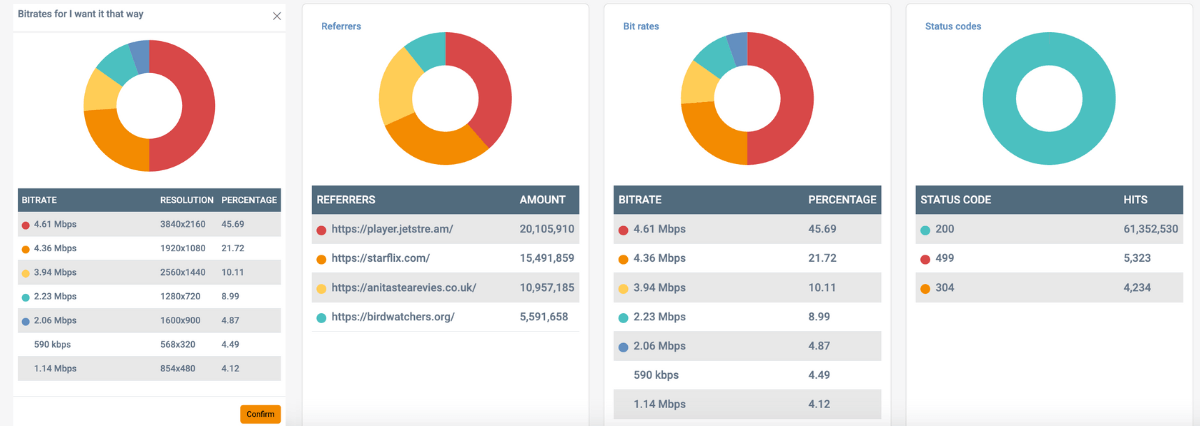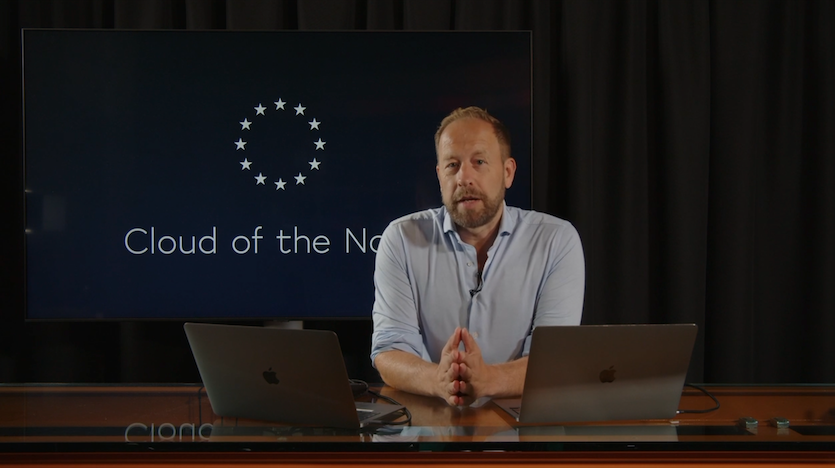The Top 7 Frustrations of Media Analytics
Last updated: 29 May 2023

Hopefully, this blog will give you more guidance on what media streaming analytics should meet for you. Written by Jet-Stream’s team who have 20 years of experience with streaming statistics software.
Do you recognize the frustrations below? Or do you have other frustrations or ideas? Please share them with us! This way, we can learn from each other and improve our statistics service even further, making your life as a professional streamer even more enjoyable.
Share your frustrations and ideas – or – Test StreamStats
The importance of reliable media analytics
Media analytics are in fact the most important product of a streaming platform: they account for consumption and billing, and thanks to good statistics the user is accountable to his board, and has such insight into reach, usage and trends that he can make optimal adjustments. Then, of course, your statistics must be reliable, clear, secure and convenient to use. And there are quite a few frustrations about that in the market.
The top 7 frustrations of media analytics
1) There is no data!
It never ceases to amaze us how often it happens that a party contacts us to switch from another streaming service provider, but they cannot tell us how much data traffic they generate. Or one does not know how many viewing or listening sessions they have, where their traffic comes from worldwide, or what the viewing duration is. It is then difficult to give a good quote.
We can figure it out, but apparently, suppliers still get away with not having to give access to data. And there is still too little accountability from boards of directors to those responsible for media services. Fortunately, this is changing, as online radio, online video, podcasts, event streams and live TV are beginning to take on strategic importance. You’d like to know how well your media performs so you can turn the right knobs to up your performance, and you want to measure your consumption and costs, useful for a business case anyway. So frustration number one is simply not having data available.
2) Different systems
Today, a professional organization has a mix of online media: podcasts, videos, live events, live TV and live radio. Gradually, different service providers are also chosen for the different types of media. And then frustration #2 emerges: having to interpret multiple reports and make one overall report out of them. You have to log into multiple systems, each with its own interface, its own way of measuring, and its own way of interpreting. You then have to filter out the right data from those and merge it into its own report, hoping the data will then be consistent and correct. What a job! It can be a day’s work. So, frustration #2 is that you have repetitive work (time is money) from merging different reports, and the end result is never ideal.
3) Inaccurate analytics
Obviously, you want to be able to analyze how well your media performs online so you can optimize your offerings. Then you need to be able to assume that the source data is complete and accurate. Data is often assumed to be accurate, but is it really? Many media analytics solutions are based on trackers. But not every playback device (hello Icecast) can or wants to load those trackers. More and more browsers are blocking cookies and trackers, and what about adblockers? The statistics system can be nice, and pleasant to use, but if the data is not correct, do you have the right insights, and do you make the right strategic or tactical choices? So, frustration number 3 is that data doesn’t add up. Ouch.
4) Clutter
Collecting reliable data is one thing, displaying it clearly is two. Having to navigate through all sorts of menus and screens to find simple basic data is a major frustration. The display is also often a source of frustration because sometimes a visual pie chart is illuminating, and sometimes you just want lists and then to be able to sort, filter and analyze more deeply. Clutter is frustration number 4.
5) Implementation
What a hassle it always is to add statistics services to all your players, especially if you offer a mix of content such as podcasts, radio streams, video streams and on-demand videos. Multiple systems, multiple trackers, multiple players. And then an update to a browser, a player, a VMS, or CMS comes along and something breaks. Good luck figuring it out and patching it. If it gets too big, then you want to automate and integrate things: welcome to the world of multiple APIs: you can free up an expensive engineer for this. If you can find one at all. And what if that one leaves? Rolling out and managing metrics is rightfully frustration number 5.
6) Who can actually access the data?
It’s good to know that your data is in a redundant, scalable cloud environment. You always want to be able to access it, the system should always be fast, and you don’t want any loss of data. But where does your data actually reside? And who at all can access it? What about personal data? Almost all media analytics services are US-owned, or else they run on US clouds. Firstly, this gives you a problem with the GDPR: logs contain personal data, which you are not allowed to store and process outside EU entities or outside EU territory. Secondly, you have a problem yourself: consumption data and statistics are of strategic importance. Good access gives you a competitive advantage. There are parties whose business case is trading data. And there is a risk of corporate espionage. What if your competitor can access your data? Good data protection is frustration #6.
7) Ignorance
Admittedly, this point is actually our own frustration. Often streaming parties do not know what is possible or what limitations are regarding statistics. They have once seen statistics from a video platform, and then assume that this is it then, and that it is accurate. No real thought is given to how reliable the data processing or sources are, what happens to their data, where it’s stored, whether it’s processed correctly, and whether there might be more data. Only when we show them our statistics dashboard and explain what it takes to display statistics reliably, securely and clearly, do their eyes finally open. So, we keep this seventh frustration to ourselves, there is still much mission work to do. Maybe this blog will help a little 🙂
20 years of experience in media analytics
When we launched our streaming platform in 2003, we pioneered media statistics. The first version of StreamStats saw the light of day. Twenty years later, StreamStats has evolved into a professional scalable SaaS cloud service for media analytics and insights that still maintains the same core values:
- reliable data
- ease of use
- unified viewing
- data protection
We have learned a lot over the past 20 years from how customers work with statistics, what data they like to see, as well as what infrastructure and architecture design is needed under the hood to make this work smoothly. We put all this knowledge back into the ongoing development of StreamStats.
StreamStats insights
1) The source: data
StreamStats collects its source data from our own cloud and from integrated CDNs. This offers several advantages:
- 100% data capture. If someone is watching, it will be logged, guaranteed. There is no dependence on trackers, browsers or blockers. So, you can be sure you are working with accurate data.
- Rich data. Time of day, viewing duration, geography, devices, performance, everything is logged. So, you get deep insights into trends, usage, performance and consumption.
- No integration. Data is collected automatically, you don’t have to do anything: no trackers to build in players, no extra systems to integrate and manage. This saves enormously in lead time, management and costs.
- Real-time data. Data is logged and collected in real time. So you don’t have to wait to see how popular your latest stream or video is.
- Secure and private. Viewing behaviour data is sent over secure connections to StreamStats on Jet-Stream Cloud, and like trackers, does not go over the public Internet. Remote source data is immediately destroyed once it arrives at Jet-Stream Cloud.
2) Processing: StreamStats Engine
StreamStats is a modern scalable cloud service. This offers several advantages:
- Real-time processing. If someone has been watching, then you can see it in the dashboard within seconds.
- Scale. The modern elastic and Kubernetes architecture allows billions of log lines to be processed per hour.
- Robustness. The cloud architecture ensures that data is automatically stored multiple times so that your data is available in the future.
- Efficient. Processing logs and statistics is one of the toughest applications in our industry next to transcoding. StreamStats is efficiently designed to display the richest possible data arrow-fast with as few resources as possible.
- Green. All power used to retrieve, process and display your data is green. Good for the planet.
- Affordable. Jet-Stream Cloud is our own cloud so we have no expensive external cloud procurement costs, allowing StreamStats to be offered for free or competitively, with longer data retention and more data than you’re used to from other parties.
- Secure. Jet-Stream’s secure cloud secures your data.
- Privacy. StreamStats runs on Jet-Stream Cloud, 100% European and GDPR-compliant.
3) Unified media analytics: all media data in one system
Whether you offer podcasts, music, videos, live radio, live events, webcams or live TV channels, StreamStats processes and displays all data in one unified overview. This saves you frustrations with interpretation and saves you a huge amount of work.

4) The GUI: user-friendly
StreamStats gives you all your core data in one overview, such as data consumption, sessions, trends, most popular media and streams, numbers of views, viewing time, bit rates, origins and devices. Click on a title and all data is displayed in real-time. We dare to say that StreamStats has the most user-friendly interface in our industry for media analysis. It saves time, money and frustration.

5) Automation
StreamStats is an API engine, from which you can extract your own data so that you can do further processing. All you have to do is work with 1 unified API and all the data you need will come out in real-time and structured. A link to an external system is therefore easy and quick to set up, so you don’t have large start-up costs, lead time or high management costs. That in turn saves on your Total Cost of Ownership.
We think we save a lot of frustration, time and costs with our streaming media analytics tool – StreamStats. Our customers are very enthusiastic about it. And we ourselves are proud of the latest release with even more advanced features. For that, read this blog. And: Feel free to test the best analytic software here!




